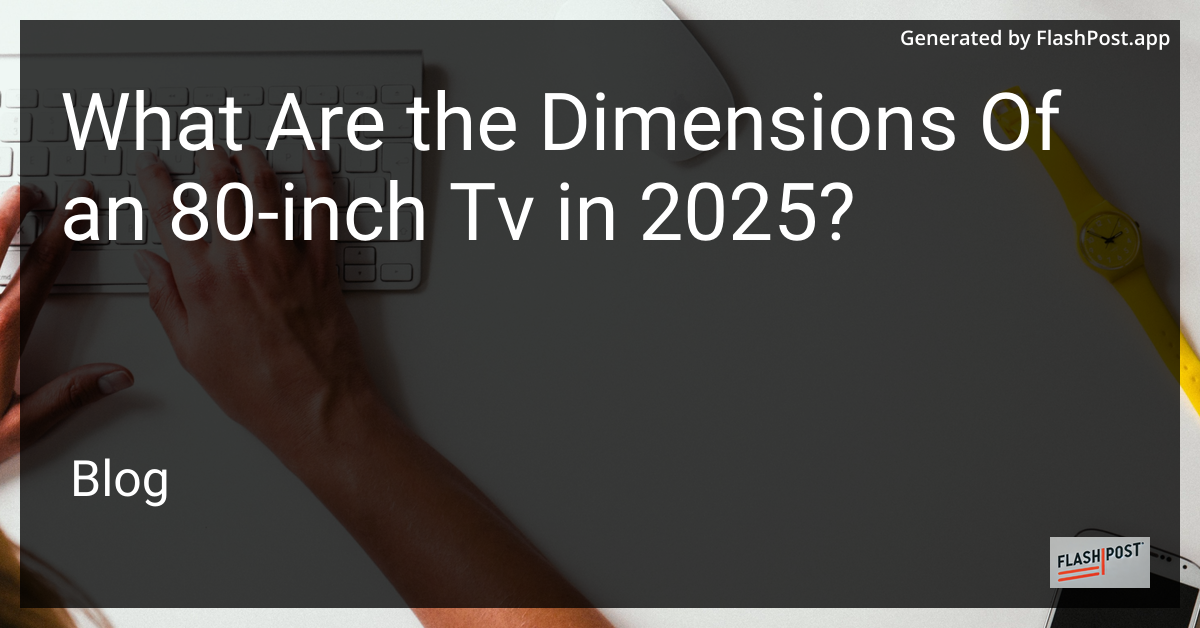
What Are the Dimensions of an 80-Inch TV in 2025?
As we step into 2025, the allure of larger television screens continues to captivate audiences worldwide. Among the favorites is the 80-inch TV screen, which has become synonymous with a cinematic experience right in the comfort of your home. But how big is an 80-inch TV really? Let's dive into its dimensions and find out what makes this size a popular choice for movie aficionados and sports fans alike.
Understanding TV Dimensions
First, it's essential to clarify what we mean by the "size" of a TV. The advertised size of a television refers to the length of its diagonal, measured from one corner to the opposite corner. Thus, an 80-inch TV means the screen stretches 80 inches diagonally. This measurement is crucial when considering how it will fit into your living space.
Specific Dimensions of an 80-Inch TV
In 2025, an 80-inch TV typically measures approximately 69.8 inches wide and around 39.2 inches tall, considering the 16:9 aspect ratio, which is standard for most HDTVs and OLED TVs. Keep in mind, the actual dimensions might vary slightly based on the brand and model, especially with the ongoing innovations in OLED technology in 2025.
Why Size Matters
Choosing the right TV size can significantly impact your viewing experience. If you're looking to create a home theater, an 80-inch TV could provide just the immersive experience you're seeking. However, ensure that you have adequate space; the recommended viewing distance for such a large screen is roughly 10 to 13 feet to prevent any viewing discomfort.
Conclusion
By understanding the dimensions of an 80-inch TV, you can make an informed decision about whether this size is suitable for your entertainment needs. Whether you're upgrading for gaming, watching the latest movie releases, or following your favorite sports teams, the correct TV size will enhance your audiovisual experience. As technology advances, it’s also beneficial to keep an eye on new developments in display technology and syntax improvements like the TextView syntax in Kotlin for tech-savvy users.